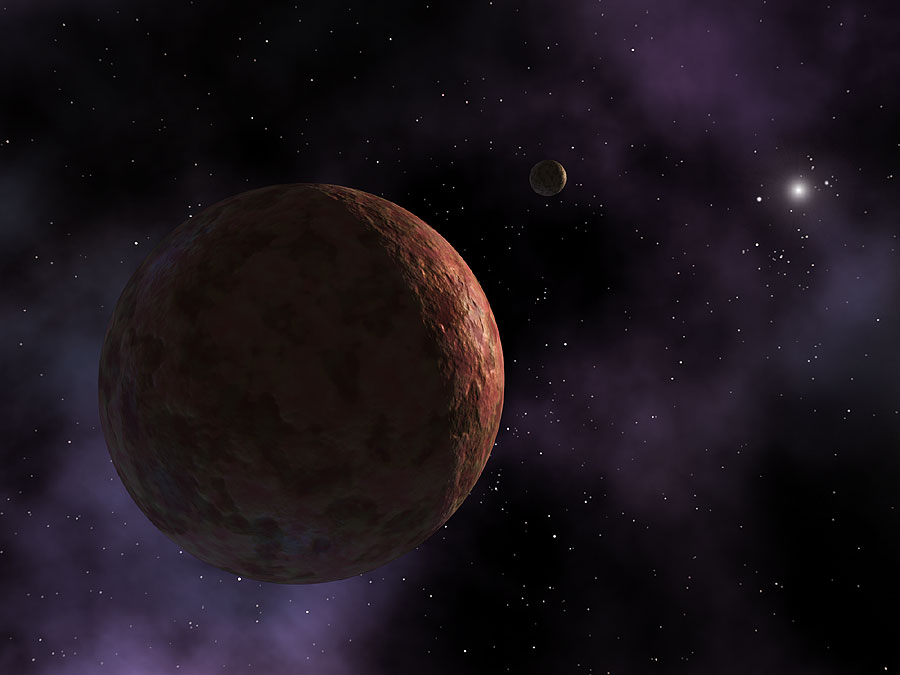When one reads the article on National Geographic Should Pluto be a Planet? New Finds Drive Debate It is easy to see why it has cause controversy. The first, and the emotional factor is that many people, both astronomers and lay men have become attached to planets. However one can assign relevance to this idea when one considers that Pluto was demoted due to it's inability to clear an orbital path, with debris now being discovered recently at points in Earth's orbit and other Near Earth Objects, can Earth's orbit be considered cleared?
There is evidence in our own Solar System of Planetary Migration, and with the recent discovery of Exoplanets and Rouge Planets it can be said that not only can planets of any size migrate but they can be ejected from their very own systems. It is easily conceivable that Pluto was born in the same area as the two ice giants, and was gravitationally swung out of the ecliptic plane at an early age as it was forming. It also could have conceivably formed later as it is thought to be more like the terrestrial planets than the ice giants.
Below is a picture taken from the Hubble Telescope
It is believed that Pluto was hit by a large object, which resulted in Pluto ejecting a large amount of molten material, forming Charon, Hydra Nix and the moons labeled as P4 and P5 on the image from the Hubble Telescope.
This image taken from Wikipedia shows a well made diagram that could put a picture to my words.
Even more intriguing though is the existence of 5 verified moons orbiting the planet. More recent simulations have been run, and with data that we currently have computers have generated a model which would result in Pluto having potentially as many as 10 moons, and a ring system, as a result of these small moons accreting some but not all of the material. In addition to previous studies which hypothesize that Charon resulted in smaller moons being swung out due to gravitational resonance.
It may take a few years, perhaps a decade or even more, but with such a hazy definition of a planet from the IAU, it is clear that eventually this wrong decision will be made right.
Supporters of Pluto's demotion say that we could either get rid of Pluto or end up having many more planet's (NASA, Kuchner). Timothy Spahr, head of the IAU's Minor Planet Center found such an argument ridiculous and said "There are over 200 bones in the human body. Does that mean we should redefine bones to make life easier for medical students?" A humorous but true equivalency no matter what era of history we have dared to wonder what lies beyond our horizon, we have been confronted with a map that has increasingly less gray left. The universe seems to only grow more complex the more we learn, and it does, but we can also use what we have learned to study and understand what was once hidden from us.
Pluto shares the name of the Roman god of the dead, and I believe as do many others that not only is this debate far from dead. Like many astronomers both professionals as well as hobbyists I believe that Pluto will one day regain it's rightful status as Planet.
Sources:
Scientific Journals
Science 28 January 2005: Vol. 307 no. 5709 pp. 546-550 DOI: 10.1126/science.1106818 A Giant Impact Origin of Pluto Charon by Robert M. Canup
Science 25 August 2006: Vol. 313 no. 5790 pp. 1107-1109 DOI: 10.1126/science.1127293
Forced Resonant Migration of Pluto's Outer Satellites by Charon by William R. Ward and Robert M. Canup










